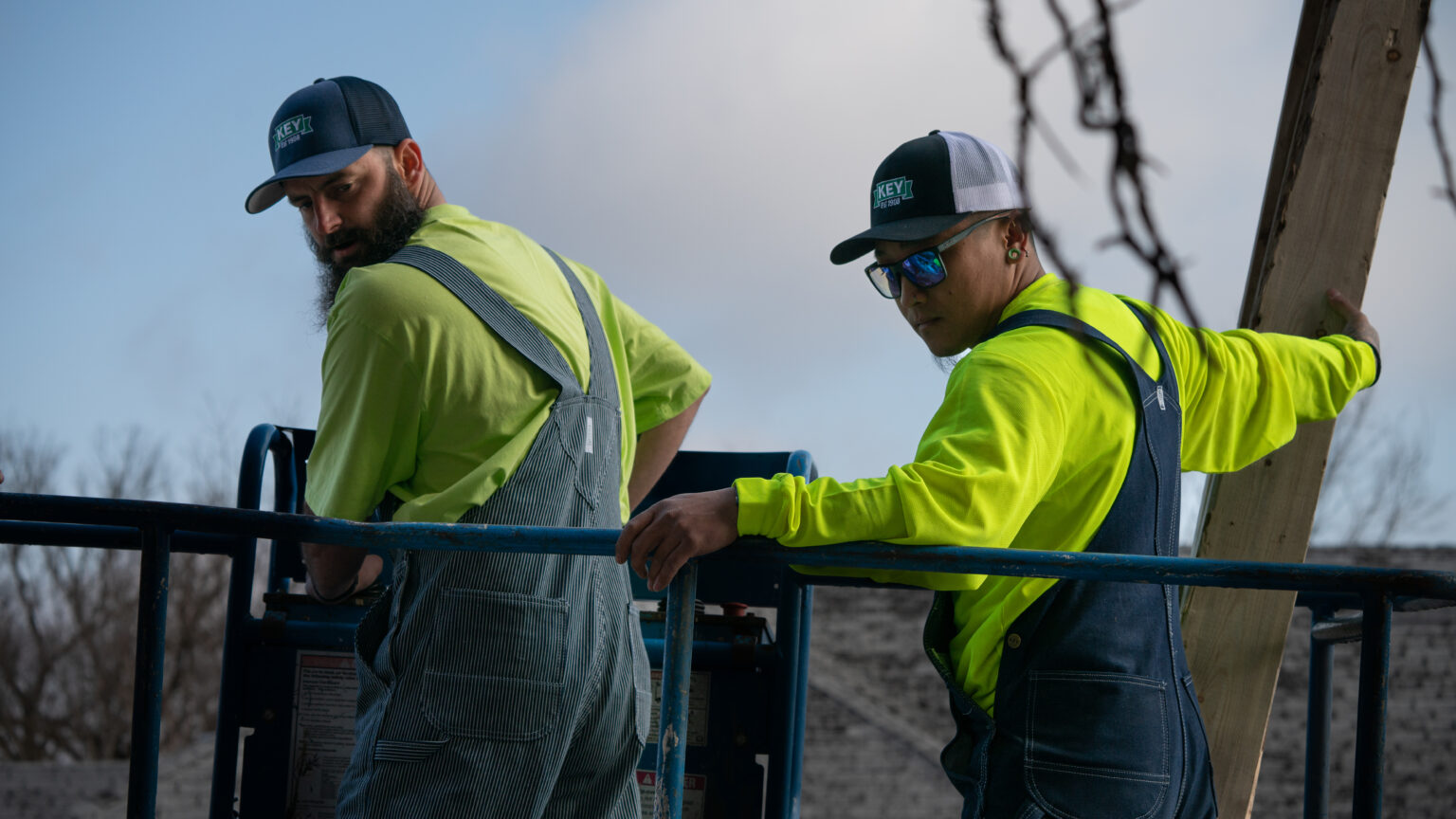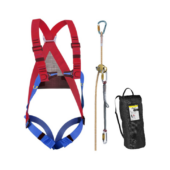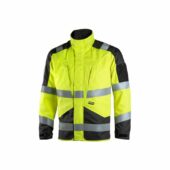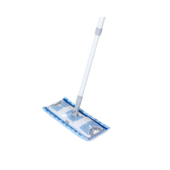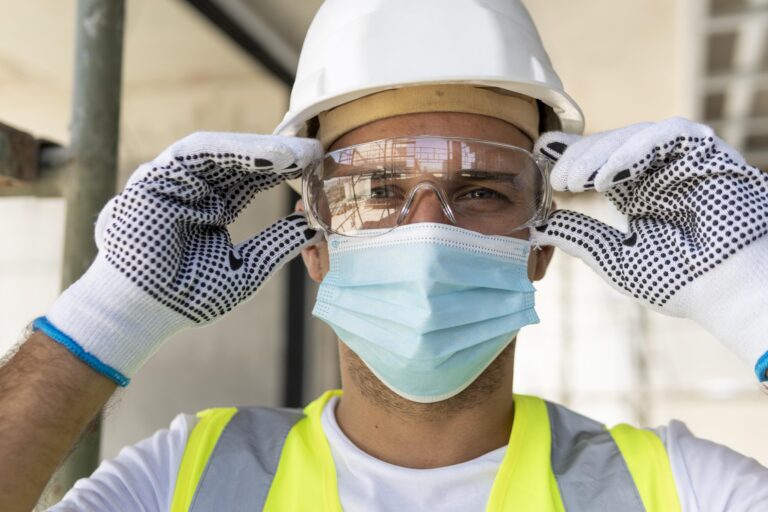Selecting the right protective workwear is essential for ensuring comfort, safety, and efficiency on the job.
If you’ve ever wondered whether bib overalls or coveralls are the best fit for your needs, this guide will break down the key differences and help you make an informed decision.
With years of expertise in workwear solutions, we’ll ensure you not only get answers to your current questions but also have a clear path for tackling future workwear challenges.
For more insights, explore our main article “Bib Overalls: Selecting The Right Protective Clothing”.
What Are Bib Overalls and Coveralls?
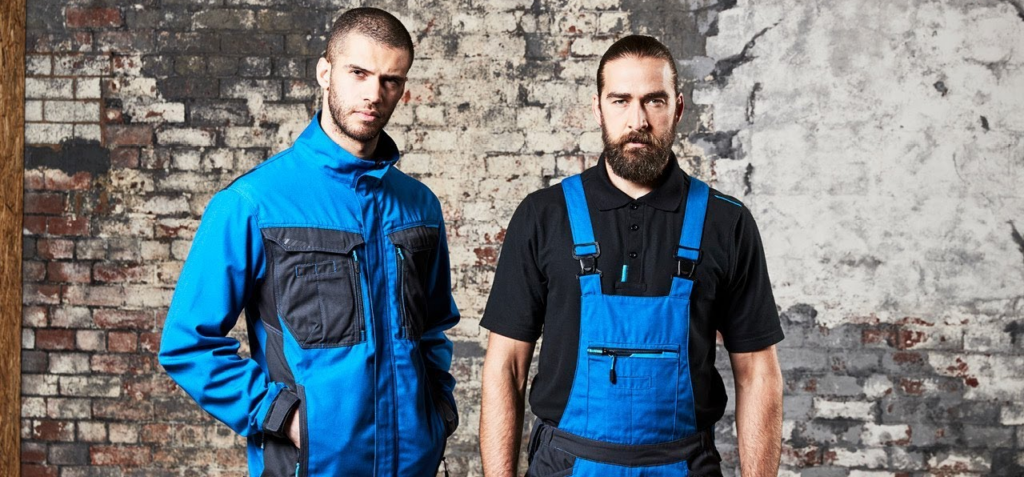
Bib overalls and coveralls are both staples in the world of workwear, but they serve different purposes. Bib overalls, also known as dungarees, are trousers with an attached front panel and shoulder straps. They offer excellent protection for the lower body and chest, leaving the arms and upper back uncovered.
Coveralls, on the other hand, are a one-piece garment designed to cover the entire body, including the arms and legs. This makes them ideal for full-body protection in challenging environments. While both options prioritize durability and functionality, choosing between them depends on your specific work needs.
For a comprehensive buying guide on bib overalls, check out our dedicated page.
Key Differences Between Bib Overalls and Coveralls
Here’s a side-by-side comparison to highlight their distinctions:
| Feature | Bib Overalls | Coveralls |
| Coverage | Chest to ankles, arms exposed | Full-body, including arms and legs |
| Mobility | High, with freedom of movement for arms | Moderate, may feel restrictive in some tasks |
| Ventilation | More breathable due to exposed upper body | Optimized for protection, with ventilation tailored for comprehensive body coverage |
| Use Cases | Ideal for light-duty work and moderate protection | Suitable for challenging environments |
| Layering | Easily layered with jackets or shirts | Worn as a standalone garment |
For more insights, read “What’s the Difference Between Coveralls and Bib Overalls”.
When to Choose Bib Overalls
Bib overalls are a versatile option for various light-duty tasks. Here are some scenarios where they shine:
- Construction and Carpentry: They provide ample pocket space for tools while offering mobility.
- Agriculture: Protects the legs and chest from dirt, debris, and minor abrasions.
- General Maintenance: Lightweight and easy to layer, perfect for indoor and outdoor settings.
For a curated selection of bib overalls, visit our Bib Overalls product category.
When to Choose Coveralls
Coveralls are essential for environments requiring full-body protection. Consider them for:
- Specialized worksites needing additional precautions: Protects against chemical spills, sparks, or arc flashes.
- Cold Storage: Insulated versions ensure warmth in low-temperature conditions.
- Industrial Cleaning: Ensures reliable coverage for cleanliness and protection during tasks involving splashes and debris.
Browse options tailored for specific needs, such as arc flash coveralls.
European Standards for Safety
For workwear intended for European environments, compliance with established safety standards is critical.
Bib overalls and coveralls are often required to meet certifications such as EN ISO 11611, which meets protective standards for welding and allied processes, such as EN ISO 11611, to ensure compliance and safety. or EN 343, which certifies protection against rain.
When choosing your workwear, always verify that it adheres to the necessary European standards to ensure maximum safety and compliance. Learn more about EN Standards from this guide in Wikipedia.
Materials and Durability
Both bib overalls and coveralls are available in a range of materials, each suited to different tasks:
- Denim and Canvas: Popular for bib overalls due to their durability and comfort.
- Flame-Resistant Fabrics: Essential for coveralls used in welding or other high-risk environments.
- Insulated Linings: Found in both bib overalls and coveralls for winter workwear.
Learn more about material options in our sibling article “Top Materials for Bib Overalls: Pros and Cons of Denim, Canvas, and More”.
Layering and Comfort
One advantage of bib overalls is their compatibility with layered clothing. Pairing them with a jacket or sweater allows for greater adaptability in varying temperatures. Coveralls, however, are designed as standalone garments, offering fewer options for layering but superior full-body protection.
For a guide to choosing the right protective layers, read “How to Choose the Right Coveralls – A Buyer’s Guide”.
Choosing the Right Fit
Proper fit enhances safety and ensures comfort. Here are some tips:
- Bib Overalls: Ensure adjustable straps are snug but not restrictive. Check the length to avoid tripping.
- Coveralls: Look for a fit that allows freedom of movement without excess fabric that can catch on equipment.
Refer to sizing charts provided by manufacturers or consult with a workwear specialist to ensure the best fit.
Related Product Categories
Looking for more options? Explore related product categories:
- Work Overalls for general-purpose protection.
- Coveralls for full-body coverage.
- Arc Flash Coveralls for specialized safety needs.
Final Thoughts
We hope this guide has clarified the key differences between bib overalls and coveralls, empowering you to select the best workwear for your tasks.
Whether you need the layering flexibility of bib overalls for light-duty work or the full-body protection of coveralls for demanding environments, you can find reliable options in our extensive product range.
Have questions or need personalized advice? Our team is here to help you navigate your options and ensure your next purchase meets your needs with confidence.
For additional insights and solutions to future workwear challenges, explore our article “Bib Overalls: Selecting The Right Protective Clothing”.
Frequently Asked Questions
Yes, many manufacturers offer customization options such as reinforced stitching, flame-resistant coatings, or additional pockets to suit industry-specific needs. Logos or branding can also be added for company uniforms.
Absolutely. Waterproof bib overalls and coveralls are available and are often made from materials like PVC or treated fabrics. These are ideal for environments with heavy rain or water exposure.
Cleaning and maintenance depend on the material. Most durable fabrics like denim or canvas can be machine-washed, while flame-resistant or insulated versions may require specialized cleaning methods outlined by the manufacturer.
Yes, many brands offer bib overalls and coveralls designed specifically for women, featuring tailored fits and adjustable straps to ensure comfort and functionality.
Common accessories include knee pads for added protection, tool belts for additional storage, and reflective vests for enhanced visibility in low-light conditions. These accessories can improve both safety and efficiency on the job.

